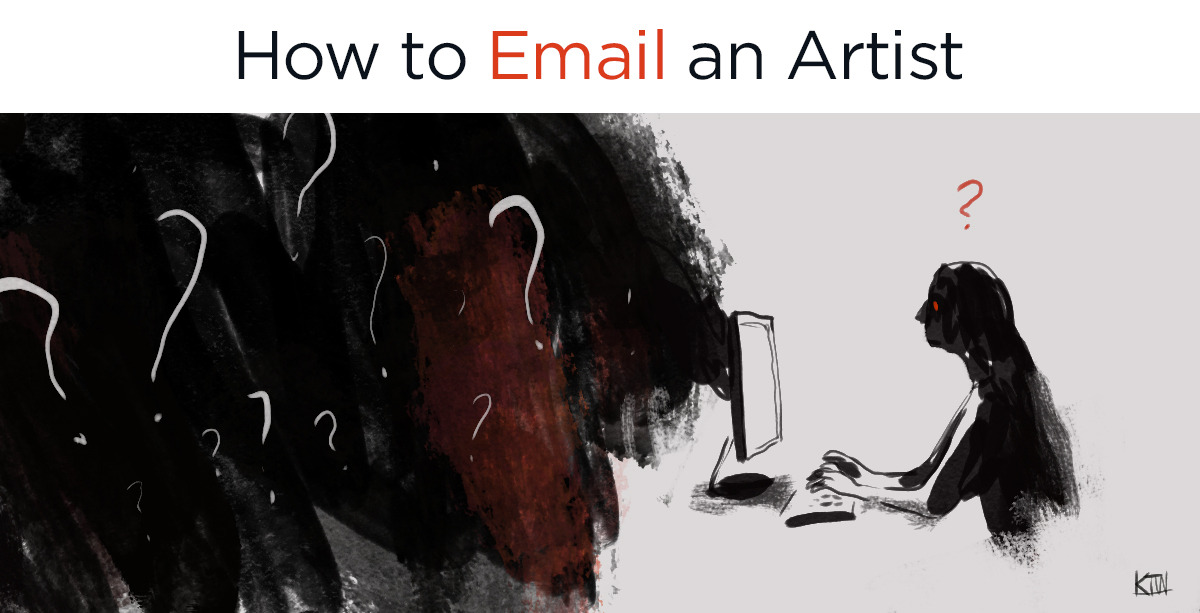kyletwebster: We artists have noticed something: communication with some of our clients (new and old
kyletwebster: We artists have noticed something: communication with some of our clients (new and old) has not been very good, of late. While there are still many art directors, creative directors, and business owners who efficiently and effectively communicate with us, there are seemingly just as many who are in need of important tips on how to properly assign work or manage projects. Please note: I do not blame these individuals — not one bit; hiring artists for projects is not usually something you are taught in school, and there is no Communicating with Artists for Dummies book, as far as I know. Therefore, here is a guideline that will lead to improved communication, fewer revisions, better artwork, and fewer headaches for all involved. 1. Your first email to an artist should not read: “Hey, are you available for a job?” This kind of email is a waste of everybody’s time, because all of the important information is missing: description of the job, timeline, and budget. In order to reduce the back-and-forth between the individual requesting the creative work, and the artist, simply take a moment to include the important information in the initial email request. For example: “Dear Ms. Granger, we are publishing a story in our magazine about the ongoing conflict between hedgehogs and walruses. We will need a cover, a full page, and two spot illustrations. The deadline for sketches is March 1st, and the final artwork will be due March 8th. Our budget is $3750. Are you available / interested in working with us on this assignment? Please let me know by 5pm today. Thank you.” With one email, you have now given the artist all of the info needed to decide whether or not to accept the job. As an illustrator, most of the emails I received ten years ago read just like the above. Lately, this has not been the case. I’m not sure what happened, but let’s fix that. 2. Please do not expect artists to read minds. Details are very important. When sending emails about your job, give as many relevant details as possible to an artist, if the assigned artwork has specific requirements. Artists are great at solving creative problems, but we cannot guess what you are looking for if we are not told up front. For example, if you tell an illustrator to draw “a car on a street,” then the illustrator will assume the make and model of the car are not important. The illustrator will also assume the street can be any kind of street. Therefore, it is not fair to the artist to reject the final art because you expected a vintage Porsche on the Autobahn. Please be sure to communicate all required elements of the art in your earliest correspondence with your artist, and it will be smooth sailing for all. If you tell an artist you need a mural of a vineyard painted on a wall in your restaurant, do not wait until the artist is half finished with a stunning, 20 foot scene with bright morning light casting cool shadows over the grapevines, to tell them that you need the time of day to be sunset. Not only is this a problem for your timeline, but the artist must be paid for all the changes that need to be made because the communication was not clear from the beginning. Sometimes, you love the portfolio of a certain artist and you wish to give this person artistic freedom when commissioning a piece of work. Let us not confuse this wish for unbridled creativity with a lack of relevant information. For instance, the recent recipient of the Richard Gangel Art Director Award, SooJin Buzelli, is famous for giving her editorial artists a lot of freedom. But, when she assigns work, she actually has spent a good deal of time figuring out a way to distill a complex article down to its essential message or theme. She then sends this one or two sentence summary to a carefully selected illustrator, providing that individual with a perfect launchpad from which to create a unique visual solution. This is good communication. The artist comes away with enough information to be creative and daring without producing a piece of work that completely misses the mark. 3. Please Don’t Leave Us Hanging This is just common courtesy. I often get asked if I am available for an illustration and I then respond in the affirmative with some questions about the assignment or the budget or some other detail. Then, no reply ever comes. A week later, I will see another artist blog about completing the very same assignment that was initially emailed to me. While I understand that everybody is very busy, and emails are flying around at the speed of light, I urge you to please remember that it is unprofessional and rude to simply leave an artist hanging. We often will put other things on hold or rework our weekly schedule to accommodate a project that we think is moving forward. A simple email to let us know that you will be working with somebody else, the job is cancelled, you need to consult with a coworker before moving forward, etc. is all we need to move on and stay on top of our other jobs. There is a popular misconception that artists are free spirits, day dreaming on a hillside and waiting for inspiration to strike, checking emails from paint smattered laptops touted around in burlap sacks … or whatever … but hey! Artists who make a living making art are working. They’re working all the time. Keeping an artist in the dark about the status of a project upsets their productivity in a major way. Please don’t do this. I welcome comments. Please be polite. Thanks. - Kyle T. Webster -- source link
Tumblr Blog : kyletwebster.tumblr.com
